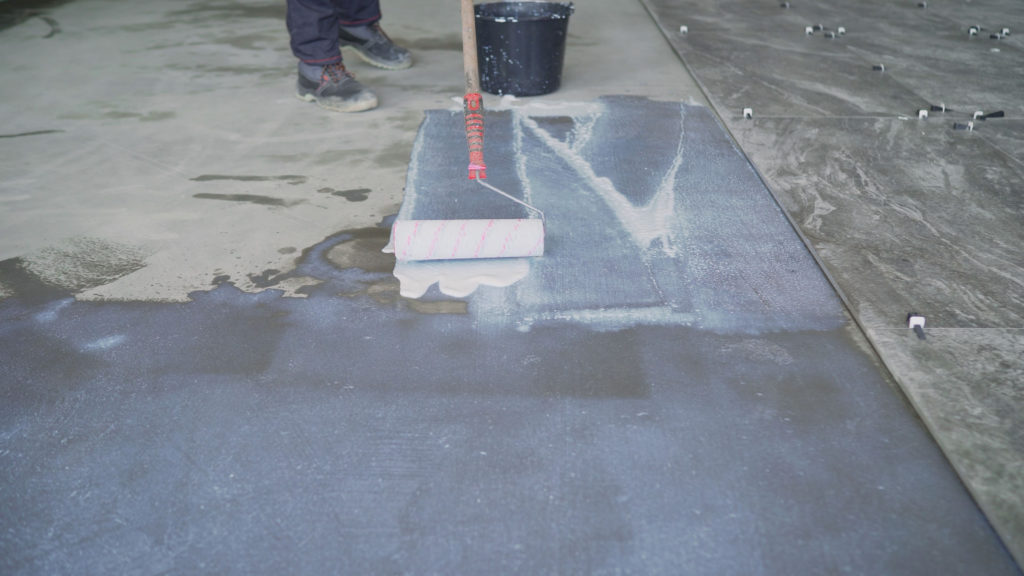The Complete Guide for Concrete Curing and Sealant

Concrete is the cornerstone of the majority of modern buildings and other structures. It provides strength and durability but requires occasional maintenance to avoid any cracks, staining, or other deterioration. Concrete sealant is a huge part of ensuring concrete stays damage free and lasts for as long as possible.
What concrete sealers are used for
Despite its high strength, concrete is very porous, allowing it to readily absorb water and soluble salts, both of which can cause it harm. If your concrete is reinforced with steel, then that water and salt can also lead to rust and corrosion. Concrete sealers act as a barrier between concrete surfaces and structures and outside substances that will accelerate wear.
Here are the top benefits of using concrete sealant:
- Prevent cracks – When it comes to concrete surfaces, especially driveways, roads, walking paths, and other outdoor structures, snow, water, and frost can enter the pores and create cracks.
- Avoid moisture – In addition to cracking, constant moisture can lead to the growth of molds and moss, which can weaken the concrete.
- Keep colors from fading – When it comes to patios or driveways, using concrete sealers will help them retain their fresh look and even give them a shiny and vibrant appearance.
- Resist stains – Concrete sealant helps you prevent permanent stains to outdoor surfaces, as it keeps the staining substance out of the concrete’s pores.
- Concrete lasts longer – Using concrete sealers extends the life of your concrete structure or surface and is much more cost effective than needing to reconstruct it more often.
Concrete curing methods
Concrete curing is another crucial step for improving its strength and durability. The process involves keeping your concrete damp and warm after initially setting it or after removing the formwork. Doing so will ensure the proper chemical reaction between the water and concrete takes place, allowing it to effectively hold together after driving.
There are several concrete curing methods available to you:
- Water curing through ponding, sprinkling, or immersion
- Covering with wet burlap, plastic film, or reinforced paper
- Using a membrane forming curing compound or cure-and-seal products
Water curing is the most common method used and makes it easy to maintain the necessary moisture and temperature levels. Membrane curing, or covering with a physical barrier, is ideal for concrete curing in remote places or areas where sufficient quantities of water are not available. Using a cure-and-seal product forms a membrane film over your concrete surface, helping it maintain adequate temperature and moisture. However, a concrete sealant should still be used once the concrete is cured.
Common concrete curing issues
The common issues with concrete curing result from timing, the amount of water, and the temperature. When it comes to timing, you should begin initial curing using a fogging method right after concrete placement. Waiting too long will allow the concrete to dry out, leading to a pattern of fine cracks called crazing. Using too little water can also create crazing, while using too much will keep it from drying. The amount of water needed will vary based on temperature and humidity levels, but the concrete should remain damp throughout the curing process.
Another concrete curing issue is maintaining the right temperature. As fresh concrete gets cooler, the hydration reaction slows down. The temperature of the concrete is what’s important here, not necessarily the air temperature. Below about 50 °F, hydration slows down a lot; below about 40 °F, it essentially stops. Hot concrete, on the other hand, can lead to too fast hydration and cracking. Plus, you may experience white “powdering” if the temperature is too low or the humidity too high.
The best way to avoid any issues is to keep the concrete damp for about seven days and between 50 °F and 85 °F. The concrete should be fully cured after 28 days.
Comparison of sealant and concrete curing products
At McCann, we carry a variety of concrete curing and sealant products, and our team will help determine the best one for your specific project. Choose from the top brands in the industry, including Butterfield Color, Euclid Chemical Co., and Prosoco.